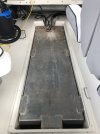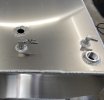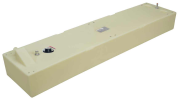N2013
Well-Known Member
Gonna be replacing my fuel tank this winter for my Double Eagle 185. It's an original aluminum tank from 1998 and showing signs of wear. Might have some miles left on it but I don’t like waiting for something to go wrong. Nothing is being changed with layout, install, or location of the tank. What sort of things should I be looking to do with the rigging of the tank? I heard some guys using quick connects for their fittings should they need to swap out to a portable tank. Fuel/Water sep is in place but will move the location. Inspection hatch is over the fuel sender & manual tank shut off. Just wondering if there's anything else. Jenkins Marine will be doing the build/install. Pic is from 2020 when I pull the lid and cleaned & resealed. Thx in advance.




